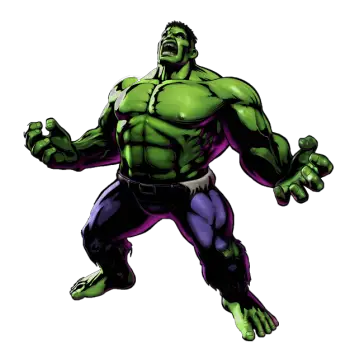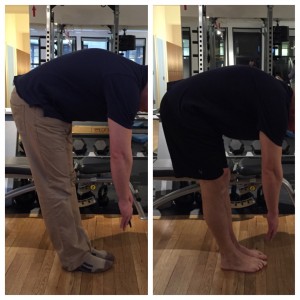I ran a secret experiment on our acupuncturist, Mila Mintsis.
But before I go into the details, it’s important to know a few things about the human body.
4 Facts to Know
1) The nervous system controls the way we move (muscles are just the “puppets”)
2) The autonomic nervous system has a huge influence on our movement
• Sympathetic = tightens muscles for fight or flight, can increase pain
• Parasympathetic = relaxes muscles for rest and relax, can decrease pain
3) Sympathetic Activity EXTENDS our body
• Too much sympathetic activity tightens our big muscles (global mobilisers)
• Puts us in a High Threshold Strategy
• This can lead to back pain, tight calfs, hip pain, shoulder pain, neck tightness, etc.
4) A simple an easy test for the nervous system is a toe touch
• If you can’t touch your toes, one of the culprits could be too much sympathetic nervous system activity – thus too much extension and muscle tightness (muscle tone)
My Experiment
I simply assessed the subject’s toe touch before and after acupuncture.
I didn’t want Mila to know what I was doing. I wanted her to be “blind” to the experiment. She could have easily used Acupuncture to loosen specific muscles and increase range of motion. To get an unbiased result, she couldn’t even know I was doing an experiment.
After acupuncture the subject had a dramatic improvement in his toe touch and a significant decrease in his perception of tightness.
How did this happen? Mila didn’t perform acupuncture with the intention of improving his toe touch. So there is no kinesiological or mechanical explanation. What it comes down to one of the most beneficial side effects of acupuncture – decreased sympathetic activity and increased parasympathetic activity. Less stress, more rest (for the brain and body). Just after one session, the tight extensor muscles were calmed down, the autonomic nervous system was more balance, and his movement significantly improved.
References
Li, Qian-Qian, Guang-Xia Shi, Qian Xu, Jing Wang, Cun-Zhi Liu, and Lin-Peng Wang. “Acupuncture Effect and Central Autonomic Regulation.”Evidence-Based Complementary and Alternative Medicine 2013 (2013): 1-6.
Andersson, S., and T. Lundeberg. “Acupuncture — from Empiricism to Science: Functional Background to Acupuncture Effects in Pain and Disease Pain and Disease.” Medical Hypotheses 45.3 (1995): 271-81
Frank C, Kobesova A, Kolar P. “Dynamic Neuromuscular Stabilization & Sports Rehabilitation”. International Journal of Sports Physical Therapy 2013;8(1):62-73.
Porges, Stephen W. The Polyvagal Theory: Neurophysiological Foundations of Emotions, Attachment, Communication, and Self-regulation. New York: W. W. Norton, 2011.
Cook, Gray. Movement: Functional Movement Systems: Screening, Assessment, and Corrective Strategies. Aptos, CA: On Target Publications, 2010.
Thelen, Esther. “Dynamic Systems Theory and the Complexity of Change.”Psychoanalytic Dialogues 15.2 (2005): 255-83.
Postural Restoration Institute – video on extension





Hi Aaron,
Interesting read. However im not sure about your comment on how sympathetic activity EXTENDS the body. Could you provide a reference for this?
Thank you,
Jason
Hi Jason,
The concept of the sympathetic nervous system extending the body is quite complex and involves the interaction of multiple subsystems (breathing, nervous system, joint mechanics, muscle length-tension relationships, centration, zone of apposition, threat perception, ontogenetics, etc.). The references provided in the post should help clarify this concept. Sorry it’s not as easy as just having one article for it.
Aaron
Always great articles…thanks!
Mighty cool, Aaron. You think there’s anything here for me?
Thanks for reading Meryl. I think it’s worth a try for anyone that is interested in it. There’s no adverse effects and some people experience great results from it.
Great little read – very sneaky. This makes me wonder about other stimuli such as soothing music or relaxing smells… I’m being transported to a massage clinic.
Thanks for the info!